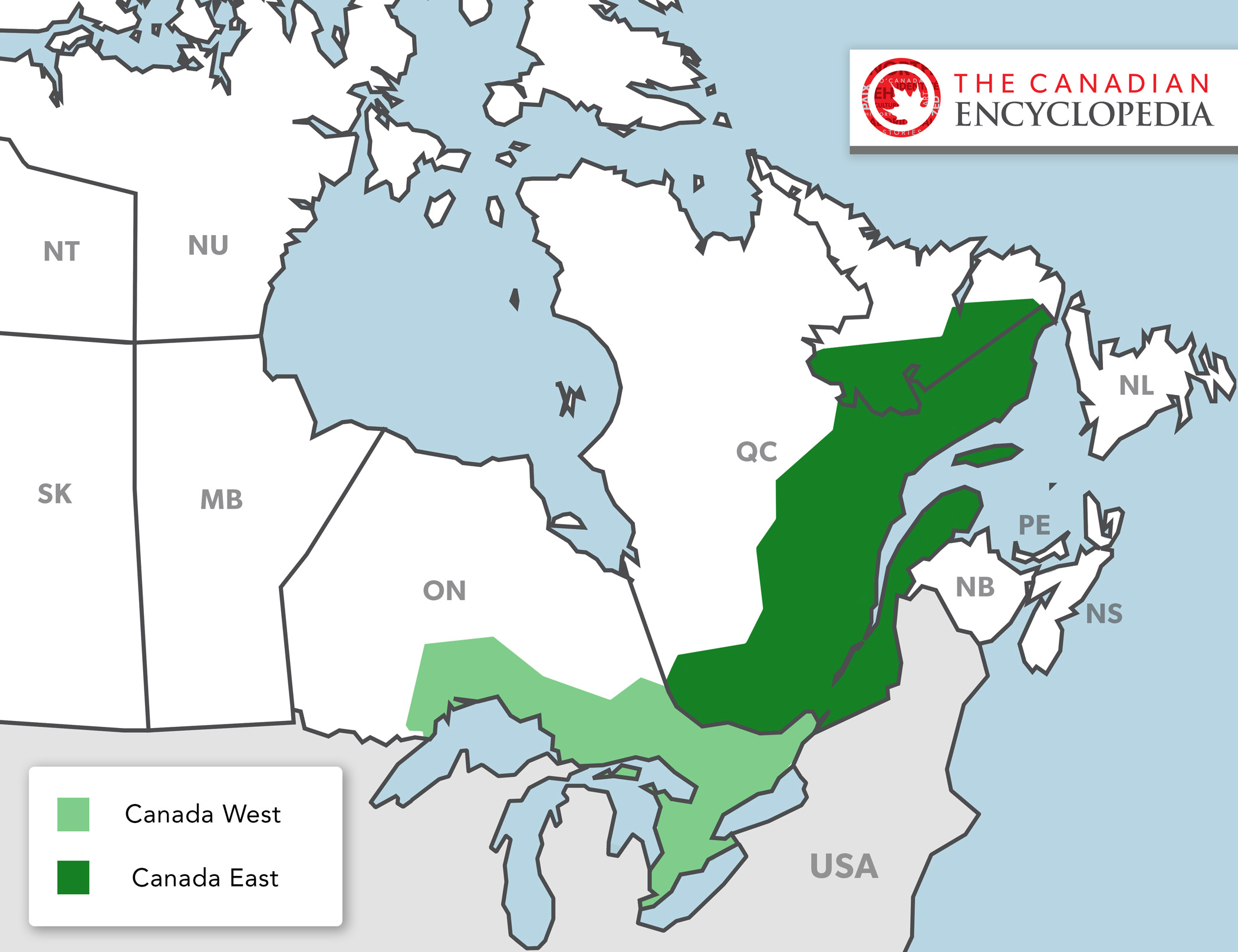Article
Calgary Herald
Calgary Herald, newspaper, was first published by Andrew Armour and Thomas Braden on 31 Aug 1883 as the Calgary Herald, Mining and Ranche Advocate and General Advertiser.

Enter your search term
Signing up enhances your TCE experience with the ability to save items to your personal reading list, and access the interactive map.
Create AccountArticle
Calgary Herald, newspaper, was first published by Andrew Armour and Thomas Braden on 31 Aug 1883 as the Calgary Herald, Mining and Ranche Advocate and General Advertiser.
"https://www.thecanadianencyclopedia.ca/images/tce_placeholder.jpg?v=e9dca980c9bdb3aa11e832e7ea94f5d9" // resources/views/front/categories/view.blade.phphttps://www.thecanadianencyclopedia.ca/images/tce_placeholder.jpg?v=e9dca980c9bdb3aa11e832e7ea94f5d9

Article
Canada Company, brainchild of John GALT, established in late 1824 and chartered in 1825 as a land and COLONIZATION COMPANY in Upper Canada. In 1826 the company purchased from the government about 2.5 million acres (1 million ha) of land for $295 000.
"https://d3d0lqu00lnqvz.cloudfront.net/media/media/a03fa073-a395-45c8-a7a3-8ae328595103.jpg" // resources/views/front/categories/view.blade.phphttps://d3d0lqu00lnqvz.cloudfront.net/media/media/a03fa073-a395-45c8-a7a3-8ae328595103.jpg

Article
Canada Corn Act, passed in 1843 by the British Parliament and applying to all grains, allowed Canadian wheat to enter the British market at a nominal duty, and flour manufactured in Canada at a proportionate rate.
"https://www.thecanadianencyclopedia.ca/images/tce_placeholder.jpg?v=e9dca980c9bdb3aa11e832e7ea94f5d9" // resources/views/front/categories/view.blade.phphttps://www.thecanadianencyclopedia.ca/images/tce_placeholder.jpg?v=e9dca980c9bdb3aa11e832e7ea94f5d9

Article
Canada Development Corporation, headquartered in Toronto, developed and maintained Canadian-controlled and -managed companies in the private sector. Created in 1971 through a special Act of Parliament, the CDC helped to widen the investment opportunities open to Canadians.
"https://www.thecanadianencyclopedia.ca/images/tce_placeholder.jpg?v=e9dca980c9bdb3aa11e832e7ea94f5d9" // resources/views/front/categories/view.blade.phphttps://www.thecanadianencyclopedia.ca/images/tce_placeholder.jpg?v=e9dca980c9bdb3aa11e832e7ea94f5d9

Article
In 1841, Britain united the colonies of Upper and Lower Canada into the Province of Canada. This was in response to the violent rebellions of 1837–38. The Durham Report (1839) laid out the guidelines to create the new colony with the Act of Union in 1840. The Province of Canada was made up of Canada West (formerly Upper Canada) and Canada East (formerly Lower Canada). The two regions were governed jointly until Confederation in 1867. Canada West then became Ontario and Canada East became Quebec.
"https://d3d0lqu00lnqvz.cloudfront.net/media/new_article_images/PoliticsInOntario/Map_Canada_West_East.jpg" // resources/views/front/categories/view.blade.phphttps://d3d0lqu00lnqvz.cloudfront.net/media/new_article_images/PoliticsInOntario/Map_Canada_West_East.jpg

Article
Canada Land Inventory is a comprehensive federal-provincial survey of LAND capability and use for regional resource and land-use planning established under the Agricultural Rehabilitation and Development Act in 1961.
"https://www.thecanadianencyclopedia.ca/images/tce_placeholder.jpg?v=e9dca980c9bdb3aa11e832e7ea94f5d9" // resources/views/front/categories/view.blade.phphttps://www.thecanadianencyclopedia.ca/images/tce_placeholder.jpg?v=e9dca980c9bdb3aa11e832e7ea94f5d9

Article
Canada Mortgage and Housing Corporation is the federal CROWN CORPORATION responsible for administering Canada's National Housing Act. CMHC was created in 1946 as the successor to the Wartime Housing Corporation, and until 1979 was called Central Mortgage and Housing.
"https://www.thecanadianencyclopedia.ca/images/tce_placeholder.jpg?v=e9dca980c9bdb3aa11e832e7ea94f5d9" // resources/views/front/categories/view.blade.phphttps://www.thecanadianencyclopedia.ca/images/tce_placeholder.jpg?v=e9dca980c9bdb3aa11e832e7ea94f5d9

Article
The Canada Pension Plan (CPP) is an earnings-related public pension plan. The CPP makes a monthly payment to Canadians and their families to partially replace their income after retirement, disability or death. Working Canadians make regular contributions to the CPP in order to be eligible. The CPP covers all Canadian workers except those in Quebec who are covered by the parallel Quebec Pension Plan (QPP). The Canada Pension Plan Investment Board (CPPIB) manages CPP assets, making it one of the largest pension fund managers in the world. As of 31 March 2021, CPPIB ended its 2021 fiscal year with net assets of 497.2 billion.
"https://d3d0lqu00lnqvz.cloudfront.net/media/media/2a6c7960-e6a1-473d-b216-1b9b66879f3d.jpg" // resources/views/front/categories/view.blade.phphttps://d3d0lqu00lnqvz.cloudfront.net/media/media/2a6c7960-e6a1-473d-b216-1b9b66879f3d.jpg

Article
The CPC, under the Canada Post Corporation Act, has a broad mandate to operate a postal service for the transmission of messages, information, funds and goods and to provide other related services.
"https://d3d0lqu00lnqvz.cloudfront.net/media/media/247aac82-d4e4-4973-b123-9691ce7727ed.jpg" // resources/views/front/categories/view.blade.phphttps://d3d0lqu00lnqvz.cloudfront.net/media/media/247aac82-d4e4-4973-b123-9691ce7727ed.jpg

Article
Canada Safeway Ltd is a food retailer with head offices in Winnipeg. Started as Safeway Stores Ltd in 1929, the company adopted its present name in 1947. In 1995, directly or through its subsidiaries, it operated 244 food retail stores from Ontario to BC.
"https://www.thecanadianencyclopedia.ca/images/tce_placeholder.jpg?v=e9dca980c9bdb3aa11e832e7ea94f5d9" // resources/views/front/categories/view.blade.phphttps://www.thecanadianencyclopedia.ca/images/tce_placeholder.jpg?v=e9dca980c9bdb3aa11e832e7ea94f5d9

Article
Canada Savings Bonds differ from other government bonds in that they can be cashed at any bank for the face value plus accrued interest. They cannot be sold by the original buyer but must be held until cashed or until they mature (usually in 7 years) from the time they were bought.
"https://www.thecanadianencyclopedia.ca/images/tce_placeholder.jpg?v=e9dca980c9bdb3aa11e832e7ea94f5d9" // resources/views/front/categories/view.blade.phphttps://www.thecanadianencyclopedia.ca/images/tce_placeholder.jpg?v=e9dca980c9bdb3aa11e832e7ea94f5d9

Article
In 1959 the St Lawrence Seaway was opened, linking the 5 Great Lakes and the St Lawrence River with the Atlantic Ocean. This allowed for much larger ships to replace the existing fleet of smaller vessels.
"https://d3d0lqu00lnqvz.cloudfront.net/media/media/538c8bcd-250d-478f-92f3-e9a2cfaff40c.jpg" // resources/views/front/categories/view.blade.phphttps://d3d0lqu00lnqvz.cloudfront.net/media/media/538c8bcd-250d-478f-92f3-e9a2cfaff40c.jpg

Article
Canada Trust was established in 1864 in London, Ont to acquire savings deposits to fund mortgage lending, with trust services added later.
"https://www.thecanadianencyclopedia.ca/images/tce_placeholder.jpg?v=e9dca980c9bdb3aa11e832e7ea94f5d9" // resources/views/front/categories/view.blade.phphttps://www.thecanadianencyclopedia.ca/images/tce_placeholder.jpg?v=e9dca980c9bdb3aa11e832e7ea94f5d9

Article
The Automotive Products Trade Agreement of 1965, better known as the Canada-US Auto Pact, led to the integration of the Canadian and US auto industries in a shared North American market. While it brought great benefits to Canada, it was eventually found to be contrary to international trade rules and was cancelled in 2001. By then it had accomplished its biggest goal — an integrated North American industry with a much stronger Canadian presence.
"https://d3d0lqu00lnqvz.cloudfront.net/media/media/56003d5b-0a71-405a-8a17-f397815e78a0.jpg" // resources/views/front/categories/view.blade.phphttps://d3d0lqu00lnqvz.cloudfront.net/media/media/56003d5b-0a71-405a-8a17-f397815e78a0.jpg

Article
In 1841, Britain united the colonies of Upper and Lower Canada into the Province of Canada. This was in response to the violent rebellions of 1837–38. The Durham Report (1839) laid out the guidelines to create the new colony with the Act of Union in 1840. The Province of Canada was made up of Canada West (formerly Upper Canada) and Canada East (formerly Lower Canada). The two regions were governed jointly until Confederation in 1867. Canada West then became Ontario and Canada East became Quebec.
"https://www.thecanadianencyclopedia.ca/images/tce_placeholder.jpg?v=e9dca980c9bdb3aa11e832e7ea94f5d9" // resources/views/front/categories/view.blade.phphttps://www.thecanadianencyclopedia.ca/images/tce_placeholder.jpg?v=e9dca980c9bdb3aa11e832e7ea94f5d9
